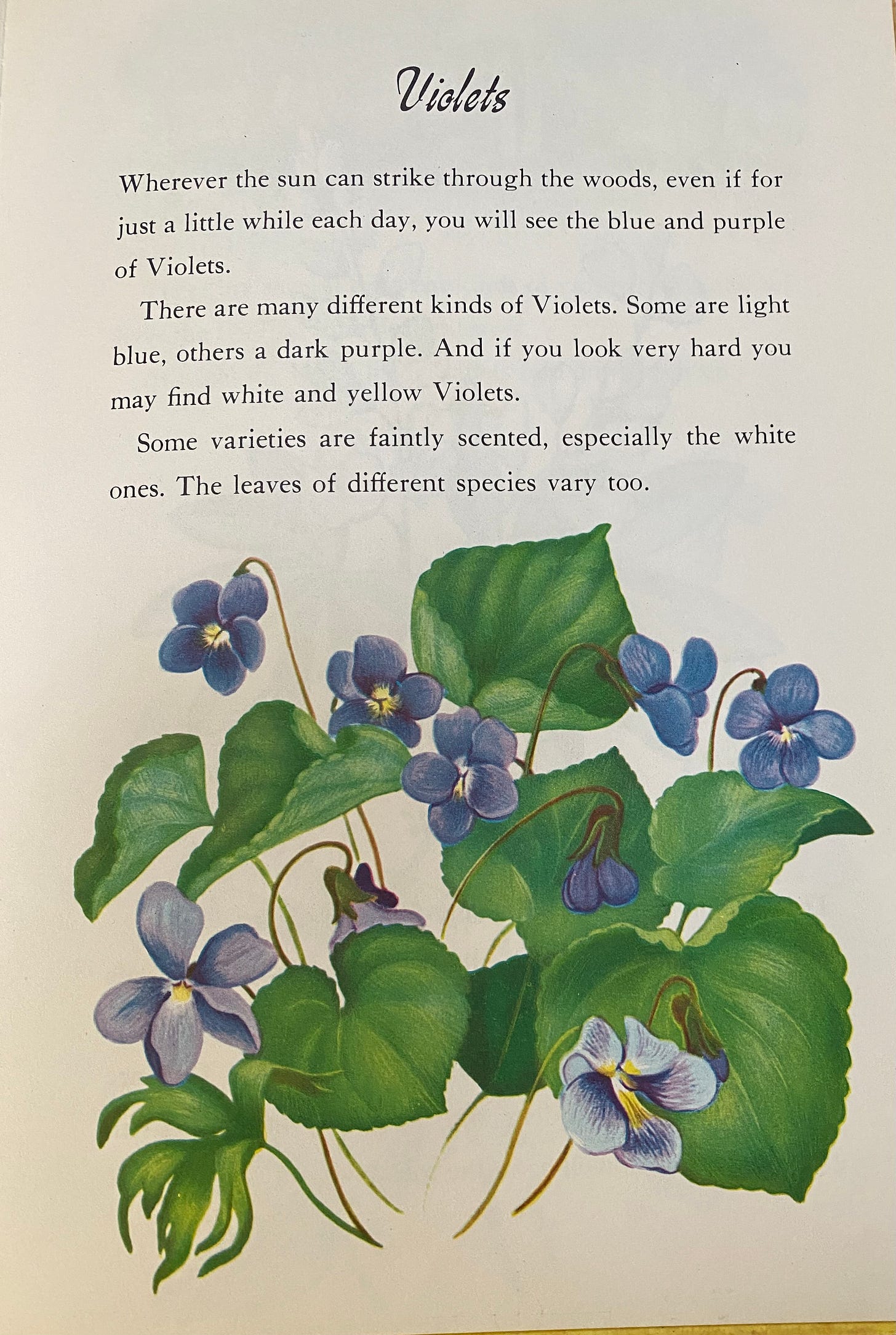I always feel it is my duty as “the gardening aunt” to give my nieces, nephews, great-nieces, and great-nephews a gardening book or two, especially when they are younger. While I give them mostly newly published books, I still look at the old children’s books whenever I’m someplace where old books can be found. Like antique stores and that one little section of the used bookstore where the “old and interesting” books are shelved.
That’s probably how I came to have in my own library A Child’s Book of Flowers by Irma Wilde. I’ll let you decide if she is a true Lost Lady of Garden Writing.
Her Biography
Irma Wilde was born Irma Eleanor Robinson on November 28, 1907, in Philadelphia, PA. Her parents were George and Estelle Robinson. According to a newspaper profile of Irma, she attended the Philadelphia Museum School and the Pennsylvania Academy of Fine Arts, where she met her husband George.
She and George were both illustrators of numerous children’s books and textbooks, retiring in 1973. From the census records, I discovered they lived with his parents in Roanoke, VA in 1940, with their one-year-old daughter. But in the 1950 census, they are in their own home. It was a modest three-bedroom, one-bath brick home on Main St. in Roanoke. (Currently, as of the time I am writing this, their house is for sale! I toured it online, but it has been modernized so probably looks nothing like when they lived there.)
Irma died in 1991, age 83, in North Cape May, NJ, where she lived in retirement. Per her obituary, she was survived by a daughter and granddaughter who both lived in Italy, so I presume George died earlier.
That One Gardening Book
So how does an illustrator of mostly children’s books and textbooks qualify to be a Lost Lady of Garden Writing?
Among the many books published with Irma as the author is a slim little book, A Child’s Book of Flowers, one of the “Maxton Books for Little People,” published in 1952.
In that book, she started with the first flowers of spring, Spring Beauties, and then described various wildflowers “in wood and fields” throughout the seasons. The illustrations are mostly in color, with a few black and white illustrations mixed in. The descriptions are simple, with interesting tidbits, enough to interest a child. I’ll admit that I also learned a few things about wildflowers that I didn’t know from reading the book.
Of course, when I open up any book on wildflowers, I immediately turn to the page on violets and use that to determine if the book is worthwhile.
For violets, Irma wrote:
“Wherever the sun can strike through the woods, even if for just a little while each day, you will see the blue and purple of Violets.
There are many different kinds of Violets. Some are light blue, others are dark purple. And if you look very hard you may find white and yellow Violets.
Some varieties are faintly scented, especially the white ones. The leaves of different species vary too.”
I think that’s an excellent description of violets for a child.
Irma provides similar descriptions for all the wildflowers in the book.
One Book Leads to Many Rabbit Holes
I briefly went down a rabbit hole of “Maxton’s Books for Little People” which led me to the Maxton Publishing Company and the discovery that they published an edition of Rudolph the Red-Nosed Reindeer when the author wanted to make it more widely available, even though the original Montgomery-Ward version sold six million copies. But that rabbit hole is way off track from gardening!
I also stood on the edge of another rabbit hole and briefly looked for more books with Irma Wilde as the author. There are many, but I’m afraid that though I claim her as a Lost Lady of Garden Writing, you won’t find any more books by Irma about gardening topics.
Maybe the rabbit hole I should go down into is the one where all the other children’s gardening books can be found. Perhaps I’ll do just that someday.
Do you know of other women authors of gardening books that I should research as Lost Ladies of Garden Writing? Send them my way via a comment or email!
If you find these articles interesting and think others will, too, please share them and/or subscribe.
I’ll return with the next Lost Lady of Garden Writing article in two weeks. In the meantime, you can find me in several places: my website and blog, The Gardenangelists podcast, and my weekly newsletter, In the Garden With Carol.







I must have shared this? https://annewareham.substack.com/p/substack-100-years-ago - and I'd love to know more about the book and writer.
Your posts are so informative and fun! Thank you for sharing with us.